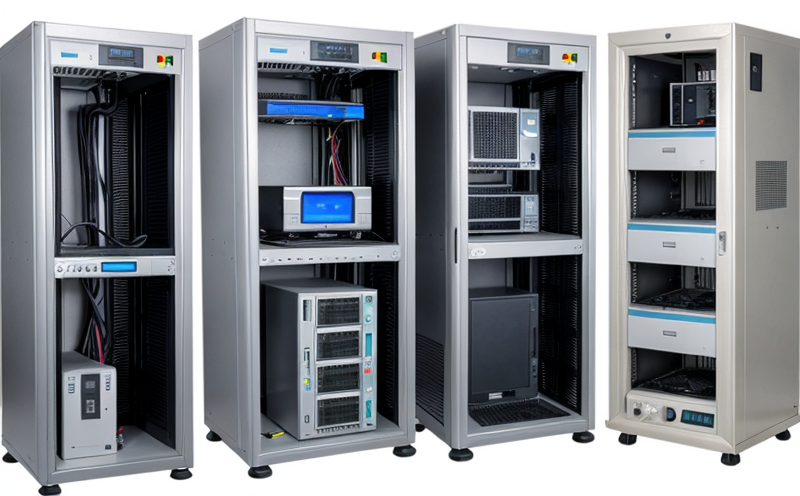JIS C 62368 Safety Testing for ICT Devices in Japan
The JIS C 62368 standard is one of the most important safety standards that governs ICT (Information and Communication Technology) devices, ensuring their safe use by consumers. This standard covers a wide array of electronic devices used in both consumer electronics and industrial applications, aiming to protect users from electrical hazards such as shocks, burns, or fires.
The JIS C 62368 safety testing process is designed for ICT equipment including computers, printers, servers, network switches, routers, and other IT and telecom devices. The standard specifies essential requirements for the safety of these products by addressing potential risks associated with their design, construction, and operation.
Compliance with JIS C 62368 is mandatory in Japan to ensure that ICT equipment meets stringent safety standards before it can be sold or used within the country. This ensures public health and safety while also protecting manufacturers from liability issues related to product failures or accidents caused by design flaws.
The testing procedures outlined in JIS C 62368 cover various aspects of electrical safety, mechanical stability, thermal management, and other potential hazards that could arise during the normal use of ICT devices. It is essential for companies involved in manufacturing, importing, or distributing such products to understand these requirements thoroughly.
Manufacturers must ensure their products pass all applicable tests before they can be sold on the Japanese market. Failure to comply with JIS C 62368 could result in legal penalties and damage to brand reputation. Therefore, investing in comprehensive safety testing early in the product development lifecycle is crucial for success.
The standard's requirements are based on international best practices and have been refined over time through input from industry experts and consumer groups. As technology evolves rapidly, so too must our approach to ensuring its safe integration into everyday life. By adhering to JIS C 62368 guidelines, manufacturers demonstrate their commitment to delivering high-quality products that meet global standards of safety.
Understanding the specifics of this standard helps quality managers and compliance officers stay ahead of regulatory changes while providing clear direction for R&D engineers working on new product innovations. Additionally, procurement teams can use this knowledge when selecting suppliers who adhere strictly to these rigorous testing protocols.
Why It Matters
Compliance with JIS C 62368 is not just a legal requirement but also a strategic business decision that contributes significantly to brand reputation and customer trust. Consumers today are increasingly aware of the importance of safety features in the products they purchase, especially when it comes to technology items which often handle sensitive data.
- Legal Compliance: Meeting JIS C 62368 ensures legal compliance, avoiding potential fines or recalls that could disrupt operations and tarnish brand image.
- Consumer Trust: Demonstrating adherence to rigorous safety standards builds confidence among consumers about the reliability of your products.
- Risk Mitigation: By identifying and addressing potential hazards early in the design phase, manufacturers reduce risks associated with product failure or accidents resulting from non-compliance issues.
In an increasingly competitive market where brands have to differentiate themselves through quality and innovation, ensuring compliance with JIS C 62368 can be a key factor in gaining market share. It showcases your company's dedication to delivering safe and reliable products that meet international standards.
Quality and Reliability Assurance
The process of conducting JIS C 62368 safety testing involves several critical steps aimed at ensuring the reliability and safety of ICT devices. These tests are conducted using specialized equipment designed to simulate real-world conditions under which products may be exposed.
- Initial Assessment: Before any actual testing begins, an initial assessment is made to identify potential risks associated with specific components or aspects of the product design.
- Test Setup: Once identified, appropriate test setups are established based on the nature of these risks. This includes selecting suitable environmental conditions such as temperature ranges, humidity levels, etc., relevant to typical usage scenarios for that particular type of ICT device.
- Data Collection: Throughout the testing process, detailed data is collected regarding how well each product performs under different stressors like overvoltage events, mechanical shocks, etc. This information helps manufacturers identify areas where improvements are needed and allows them to refine their designs accordingly.
- Reporting & Analysis: After completing all tests, comprehensive reports summarizing findings are prepared. These documents include not only results but also recommendations for corrective actions if necessary. Both internal stakeholders like R&D teams as well as external parties such as regulatory bodies rely on these analyses to make informed decisions.
A robust quality assurance framework ensures consistent application of JIS C 62368 throughout the entire production cycle, from initial concept through final assembly and shipping. This approach helps maintain high standards across all products produced by a company regardless of geographical location or target market segment.
Customer Impact and Satisfaction
Conducting thorough JIS C 62368 safety testing has direct benefits for customers by enhancing overall satisfaction levels. When consumers know their ICT devices have passed rigorous safety checks, they feel safer using them at home or in professional settings.
- Better Product Performance: Ensuring that products meet stringent safety requirements leads to improved performance and longer lifespans since manufacturers are compelled to address any shortcomings during the testing phase.
- Enhanced Reputation: Companies known for producing safe ICT devices enjoy better reputations among customers who appreciate their commitment to quality assurance practices.
- Risk Reduction: By eliminating known risks early in the development process, companies minimize the chances of encountering unexpected issues later on that could lead to costly repairs or replacements.
In today's fast-paced world where technology plays an integral role in daily activities, ensuring safety is paramount. For customers looking for peace of mind when purchasing ICT devices, compliance with JIS C 62368 provides assurance that they are getting reliable products capable of withstanding various types of stress without compromising on performance.





